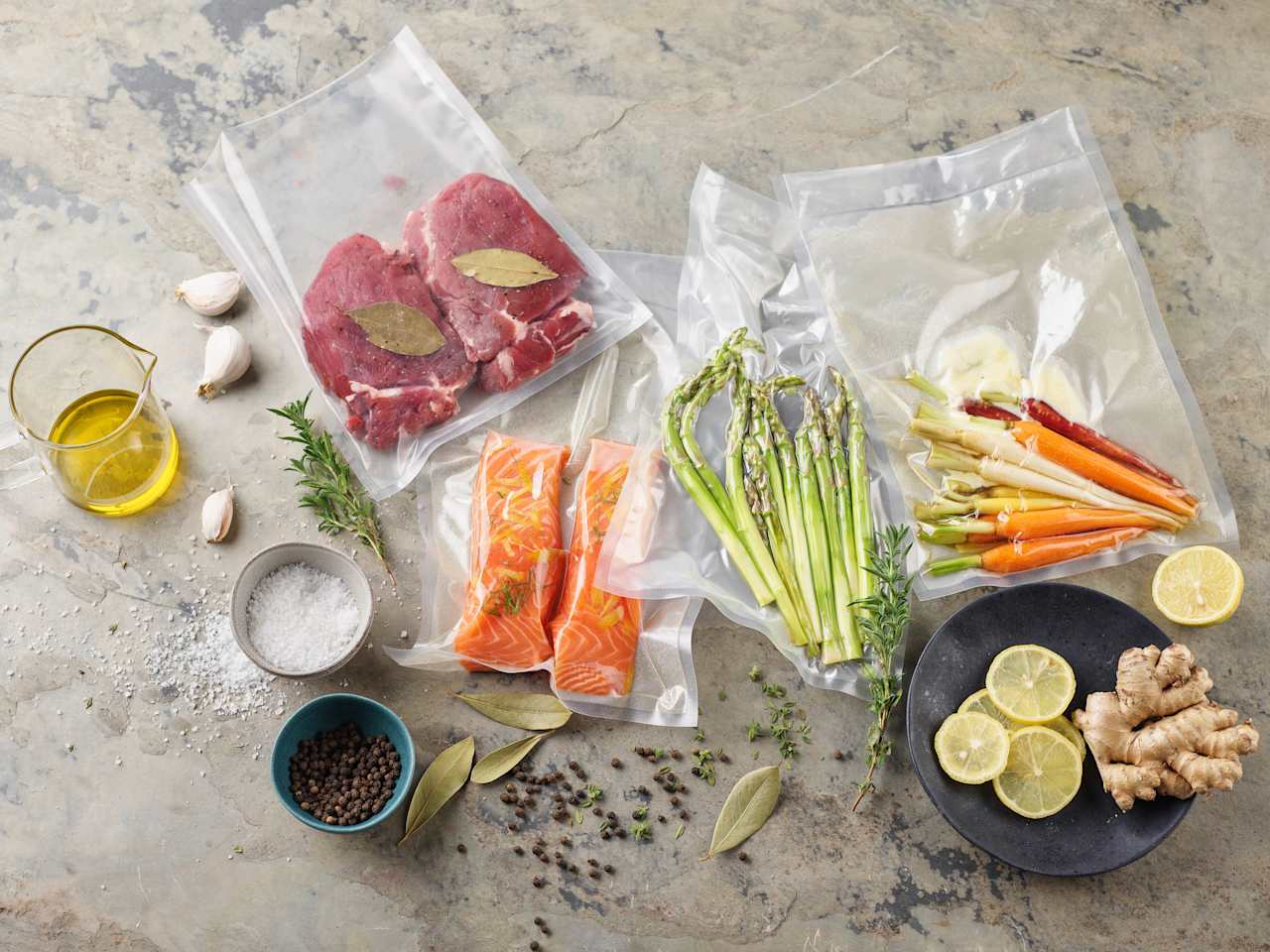Whether in the TM5 or using the Sous vide mode of the TM6, you can wow your friends and family with meat, fish, seafood, vegetables and fruit cooked to perfection every time, using this technique loved by chefs around the world.
Sous vide is a precise, gentle method of cooking where food is placed in a water bath, protected by a food-safe, air-tight bag, and cooked at a controlled temperature. Cooking the food in a sealed bag locks in all the natural flavours and nutritional benefits and also makes for extremely fuss-free cooking. With Thermomix® capability to control the temperature in 1°C increments, total accuracy is achieved while blade cover protects the sous vide bags.

Sealing the bags: There are two ways - either manually by immersing heat-resistant zip-lock bags in water to remove the air, or by using a vacuum sealer. When it comes to choosing a method, base your decision on the recipe you’re preparing. If there are liquids in the bag, choose the water immersion method. The vacuum sealer method is most effective for recipes where there is no liquid in the bag.
For the water immersion method: Place the food in high-quality, zip-lock bags (not polythene bags). Look for bags made without BPA (Bisphenol A), they're widely available from major retailers. Fill up a sink or large bowl with water and then seal the bag, leaving a gap in the seal of approx. 3 cm. Submerge the bag, leaving the open seal above the water. The pressure of the water will force the air out. Fully seal the bag before submerging completely to ensure all the air has been removed.
Clever prep: For the best results, cut your ingredients to roughly the same size and thickness. Season well and place in the bag or bags, laying the ingredients as flat as possible.
Flavour enhancing: Marinating tougher cuts of meat tenderises them while also enhancing their flavour. Add some of the marinade to the sous-vide bag and use the water immersion method to seal the bags for these types of recipes.
• The juice of half a squeezed lemon or a level teaspoon of vitamin C (ascorbic acid) must be added to the water to protect the mixing bowl. The amount of water depends on the volume of the bags. Add enough water to fully submerge the bags, and not higher than the maximum fill level.
• Use the vacuum pack bags once only.
• For sous-vide cooking, we recommend buying frozen fish or seafood that has been frozen at a minimum of -20°C for at least 24 hours. Thaw before cooking.
• Asparagus: 150 g peeled asparagus, 14 cm length Sous-vide/15 min/82ºC
• Salmon: 150 g fresh salmon fillet, 3 cm thick Sous-vide/45 min/55ºC
• Medium-rare beef fillet steak: 180-200 g each, 3 cm thick Sous-vide/1 h 30 min/54ºC
• Beef brisket: 600-800 g, cut in 2 pieces, 5-6 cm thick Sous-vide/12 h/85ºC
• Pork chops: 350 g each, 3.5 cm thick Sous-vide/1 h 30 min/70ºC
• Pork cheeks: 100-150 g each Sous-vide/8 h/85ºC
• Chicken breast: 250-300 g each, 2-3 cm thick Sous-vide/1 h 30 min/72ºC
• Apricots: 300-350 g, 3 units, halved Sous-vide/1 h/80ºC
*Please note:
• These temperatures and times are the reference after the water is heated.
• If your ingredients have a different weight or thickness, adjust the times.
• Searing meat and poultry after sous-vide cooking will add flavour.
• Marinating meat and poultry before cooking will add extra flavour.

